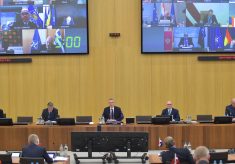Since years, Beijing has deployed a heterogeneous mix of ways and means (i.e. the weaponization of news media in the West or a vigorous digital diplomacy) to promote a certain positive image of the country. What lies sometimes partially unexposed is the ability of China to conduct Information Operations (InfoOps) or influence activities not only for political or diplomatic purposes, but also for commercial and industry-related goals.
One of the clearest examples of this trend is offered by the cybersecurity giant Mandiant, that exposed a peak of activity of an online influence campaign named Dragonbridge, targeted against the rare earth elements (REE) sector and apparently aligned with the economic and political interests of the People’s Republic of China (PRC). As experts know, this kind of materials are generating a resonant debate within the international community, and they can serve as an influential geopolitical tool. To this respect, the US Department of Defense’s agreement of collaboration with the Australian company Lynas Rare Hearts Ltd (the largest entity in the business of REE outside the Chinese borders) signed in 2021 or President Biden’s invocation of the Defense Production Act can both be interpreted as an attempt to decrease the country’s reliance on the world’s top producer China.
According to the Lynas-DoD pact, starting from 2021 the company is allowed to work on the construction of a light REE separation plant in Texas. Furthermore, in June 2022, two additional corporations (namely Appia Rare Earths & Uranium Corp from Canada and USA Rare Earth) made public respectively the discovery of a new REE-rich zone in the Northern Saskatchewan district and the intention to build a new facility in Oklahoma. In this context, the allegedly Chinese-aligned adversaries wasted no time to spread false narratives and malign messaging against the three entities from the private sector.
Spotted for the first time in 2019, Dragonbridge leverages on a robust network of thousands of inauthentic accounts on different social media platforms, forums or websites with shifting tactics, techniques, and procedures (TTPs). In the last month, a cluster composed of fake personas acting as real people living in the areas of interest started targeting local users by disseminating different content that belongs mainly to two distinct narratives (see the figure below).















